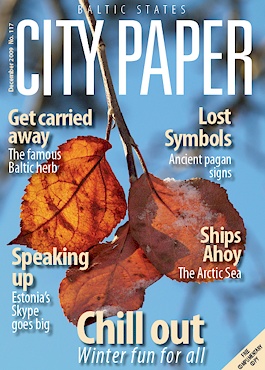Who saved Latvia's Freedom Monument?
 The most revered landmark in the center of the Latvian capital owes its survival through the 50-year Soviet occupation to a Russian sculptor – an irony in a country where tensions between Russians and Latvians often run high.
The most revered landmark in the center of the Latvian capital owes its survival through the 50-year Soviet occupation to a Russian sculptor – an irony in a country where tensions between Russians and Latvians often run high.
Having sustained seven bullets to the statue and minor damage to the base during World War II, the 42-metre Freedom Monument, unveiled in 1935 during the short-lived independent Latvia, escaped the chopping block when the Soviets regained control of the country after the war.
One legend credits the survival of the landmark of the Latvian national identity to an ethnic Russian, the Soviet sculptor Vera Mukhina, according to the book "Freedom Monument" by Vaidelots Apsitis. Sent to Riga from Moscow in 1944, she managed to convince local Soviet authorities the monument of granite, travertine and copper deserved to be preserved not for ideological reasons but as a work of art. Plus people wouldn't be pleased if it was destroyed because the monument was built on their donations.
At the time, the new authorities launched an internal debate on whether to restore the monument to the Russian Czar Peter the Great, which used to stand on the same spot in town before World War I. Alternative suggestions to include a monument to the Soviet dictator Joseph Stalin on the same spot. But either choice would mean that the Freedom Monument would have to be demolished to pave the way for a new Soviet monument.
With time the standing reminder of an independent Latvia was given a Soviet interpretation of history and the monument's symbolism was redifined, that the three stars on the top represent the three Baltic states and the woman holding them represents Mother Russia.
Mukhina herself was born in Riga in 1889, when Latvia was part of the Russian Empire. Her family of farmers settled here from Smolensk, Russia, following the Napoleonic War of 1812. Her father owned a lot of property in the Moscow district of the Latvian capital and himself dabbled in art. When she was three, her mother died and her father decided to move first to the Crimea in present-day Ukraine, then to Moscow.
Perhaps the best known Mukhina creation was a steel statue of The Worker and The Peasant Woman erected in Moscow. The sculptural composition earned Mukhina a trip to the World Exhibition in Paris in 1937. The statue became a trademark logo of then-Soviet, now Russian film studio, Mosfilm.
Mukhina was sent to Riga from Moscow because she was familiar with Latvian colleagues. She stopped by the Latvian capital on her way from Paris in 1937. Although it'd be easy to consider Mukhina as an artist for the Stalinist regime, she also suffered from it. She and her husband, a doctor Aleksei Zamkov, considered fleeing the country when they were sent into exile to the Russian town of Voronezh. Only after the Soviet writer Maxim Gorky intervened, were they allowed to return to the Soviet capital.
Most of her other work, such as a Lenin monument for the city of Moscow, remained unrealized. She died in 1953.
By Aleks Tapinsh




